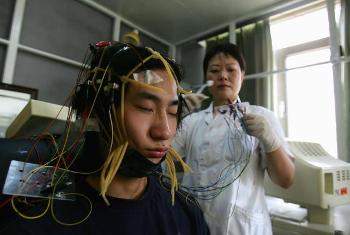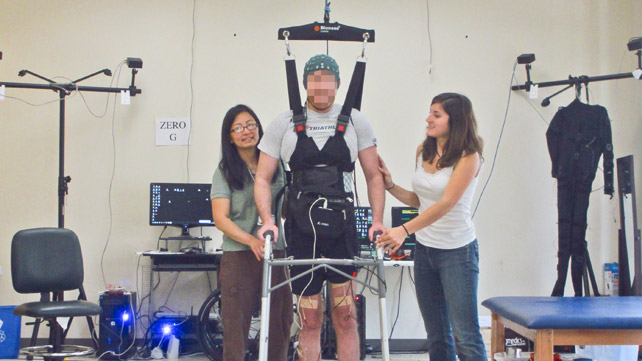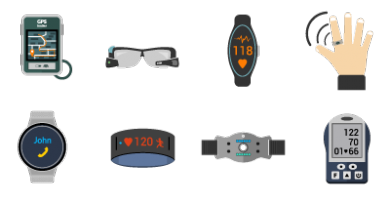A disabled man can finally walk thanks to this advanced technology
A new advanced technology has been used to make a paraplegic man walk again. Paraplegia is an impairment in motor or sensory functions of the lower body. This means that a person suffering from such a disease will not be able to move or feel their legs. A vey common cause of this condition is an accident.
A 26-year old man suffering from this condition was studied by researchers from the University of California. These researchers were trying to find a way of making him walk again, and they did.
This technology is quite sophisticated but the idea behind it is simple. The brain waves of the man were recorded and fed into a computer. This computer uses the brain waves to decide whether the man’s intention is to stand or walk.
When the computer successfully deciphers the man’s intention, it sends another signal to a microcontroller attached to the man’s belt, which sends another signal to the nerves that initiate muscle movement in the man’s legs.
The brain waves were collected with an electrode cap and the man managed to successfully complete a 3.5 meter course using this setup. Christine King was the lead author of the study and she discussed some details of the experiment with Tech Insider.
“The guy who used this technology was, five years after his injury, still able to maintain brainwaves associated with walking and able to control this over the course of several months and hold a conversation,” he said.
Before the man could start using the technology to walk, he had to go through various stages of preparation. In the first step, he had to actually learn how to generate the brain signals that would tell the computer whether his intention was to either stand or walk. He successfully learnt this by trying to move an avatar in a virtual reality simulation.
“In his mind he’s like ‘this is crazy, this will never work’ but by the second and third sessions he started learning how he has to think about walking to get the system to work,” explained King.
Once completed, he would now have to train his muscles to be able support his weight because he has not walked for five years since he got the injury. This process is called strength training and is the most difficult part of the preparation. It took 17 sessions to master.
There are several concerns with the implementation of this advanced technology. First of all, there are so many devices involved and that means carrying them around will be too troublesome, especially for a man that can barely use his legs.
“The cumbersome nature of the current noninvasive system makes its adoption for restoration of overground walking unlikely.” as they wrote in the Journal of NeuroEngineering and Rehabilitation.
“This limitation can potentially be addressed by a fully implantable brain-computer interface system, which can be envisioned to employ invasively recorded neural signals.”
Another issue was the fact that the user had to carry a battery pack all the time so the system could work. The user also had to be in the proximity of a computer as well, which is very limiting for practical applications. King is looking to improve this by making use of a Smartphone instead of a computer to increase portability. King also wants to eliminate the electrode cap and replace it with brain implants.
“No one wants to walk around with cap on their head and pads on the body,” she said.





